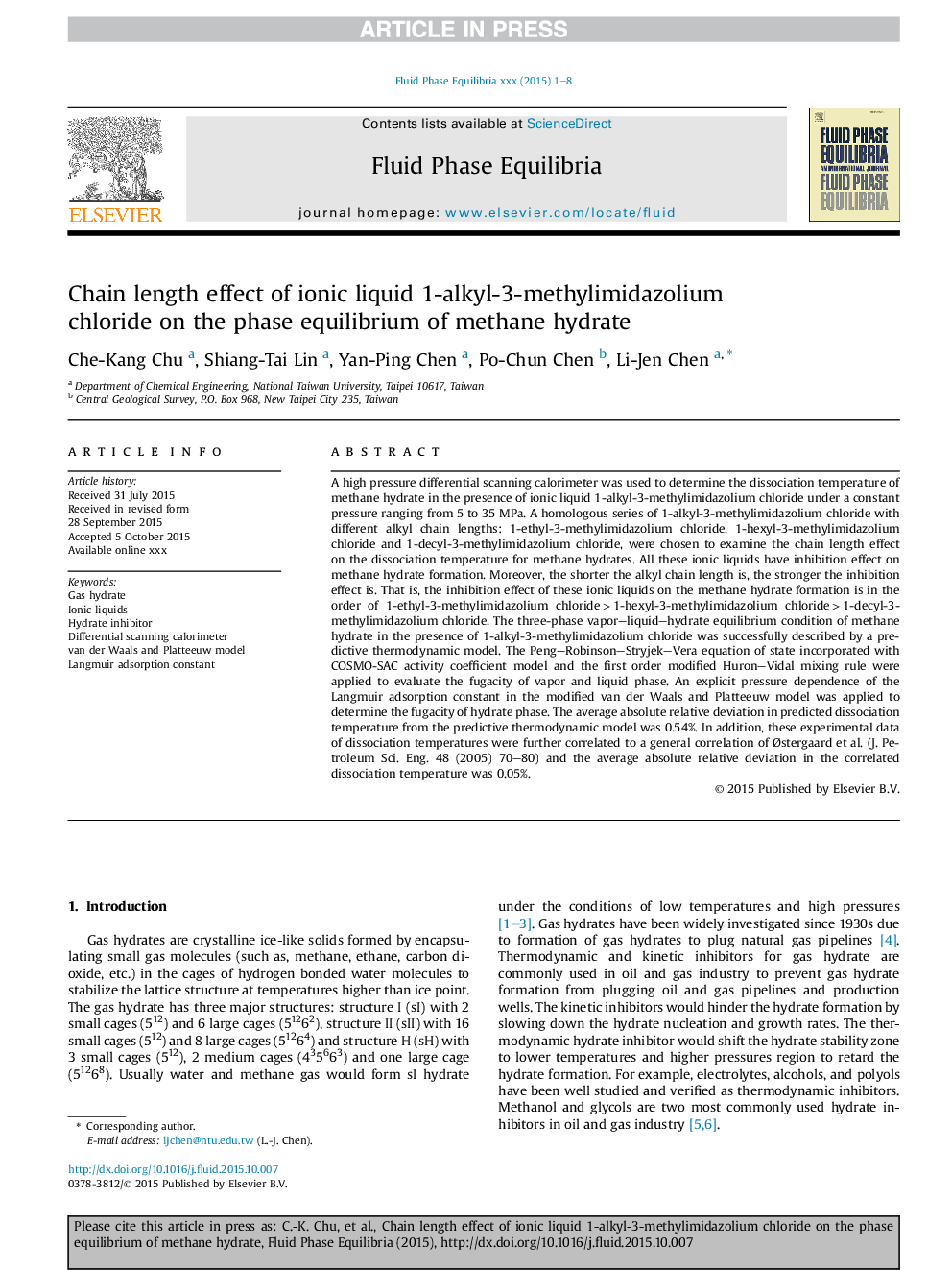| کد مقاله | کد نشریه | سال انتشار | مقاله انگلیسی | نسخه تمام متن |
|---|---|---|---|---|
| 6619519 | 460528 | 2016 | 8 صفحه PDF | دانلود رایگان |
عنوان انگلیسی مقاله ISI
Chain length effect of ionic liquid 1-alkyl-3-methylimidazolium chloride on the phase equilibrium of methane hydrate
دانلود مقاله + سفارش ترجمه
دانلود مقاله ISI انگلیسی
رایگان برای ایرانیان
کلمات کلیدی
موضوعات مرتبط
مهندسی و علوم پایه
مهندسی شیمی
مهندسی شیمی (عمومی)
پیش نمایش صفحه اول مقاله

چکیده انگلیسی
A high pressure differential scanning calorimeter was used to determine the dissociation temperature of methane hydrate in the presence of ionic liquid 1-alkyl-3-methylimidazolium chloride under a constant pressure ranging from 5 to 35 MPa. A homologous series of 1-alkyl-3-methylimidazolium chloride with different alkyl chain lengths: 1-ethyl-3-methylimidazolium chloride, 1-hexyl-3-methylimidazolium chloride and 1-decyl-3-methylimidazolium chloride, were chosen to examine the chain length effect on the dissociation temperature for methane hydrates. All these ionic liquids have inhibition effect on methane hydrate formation. Moreover, the shorter the alkyl chain length is, the stronger the inhibition effect is. That is, the inhibition effect of these ionic liquids on the methane hydrate formation is in the order of 1-ethyl-3-methylimidazolium chloride > 1-hexyl-3-methylimidazolium chloride > 1-decyl-3-methylimidazolium chloride. The three-phase vapor-liquid-hydrate equilibrium condition of methane hydrate in the presence of 1-alkyl-3-methylimidazolium chloride was successfully described by a predictive thermodynamic model. The Peng-Robinson-Stryjek-Vera equation of state incorporated with COSMO-SAC activity coefficient model and the first order modified Huron-Vidal mixing rule were applied to evaluate the fugacity of vapor and liquid phase. An explicit pressure dependence of the Langmuir adsorption constant in the modified van der Waals and Platteeuw model was applied to determine the fugacity of hydrate phase. The average absolute relative deviation in predicted dissociation temperature from the predictive thermodynamic model was 0.54%. In addition, these experimental data of dissociation temperatures were further correlated to a general correlation of Ãstergaard et al. (J. Petroleum Sci. Eng. 48 (2005) 70-80) and the average absolute relative deviation in the correlated dissociation temperature was 0.05%.
ناشر
Database: Elsevier - ScienceDirect (ساینس دایرکت)
Journal: Fluid Phase Equilibria - Volume 413, 15 April 2016, Pages 57-64
Journal: Fluid Phase Equilibria - Volume 413, 15 April 2016, Pages 57-64
نویسندگان
Che-Kang Chu, Shiang-Tai Lin, Yan-Ping Chen, Po-Chun Chen, Li-Jen Chen,